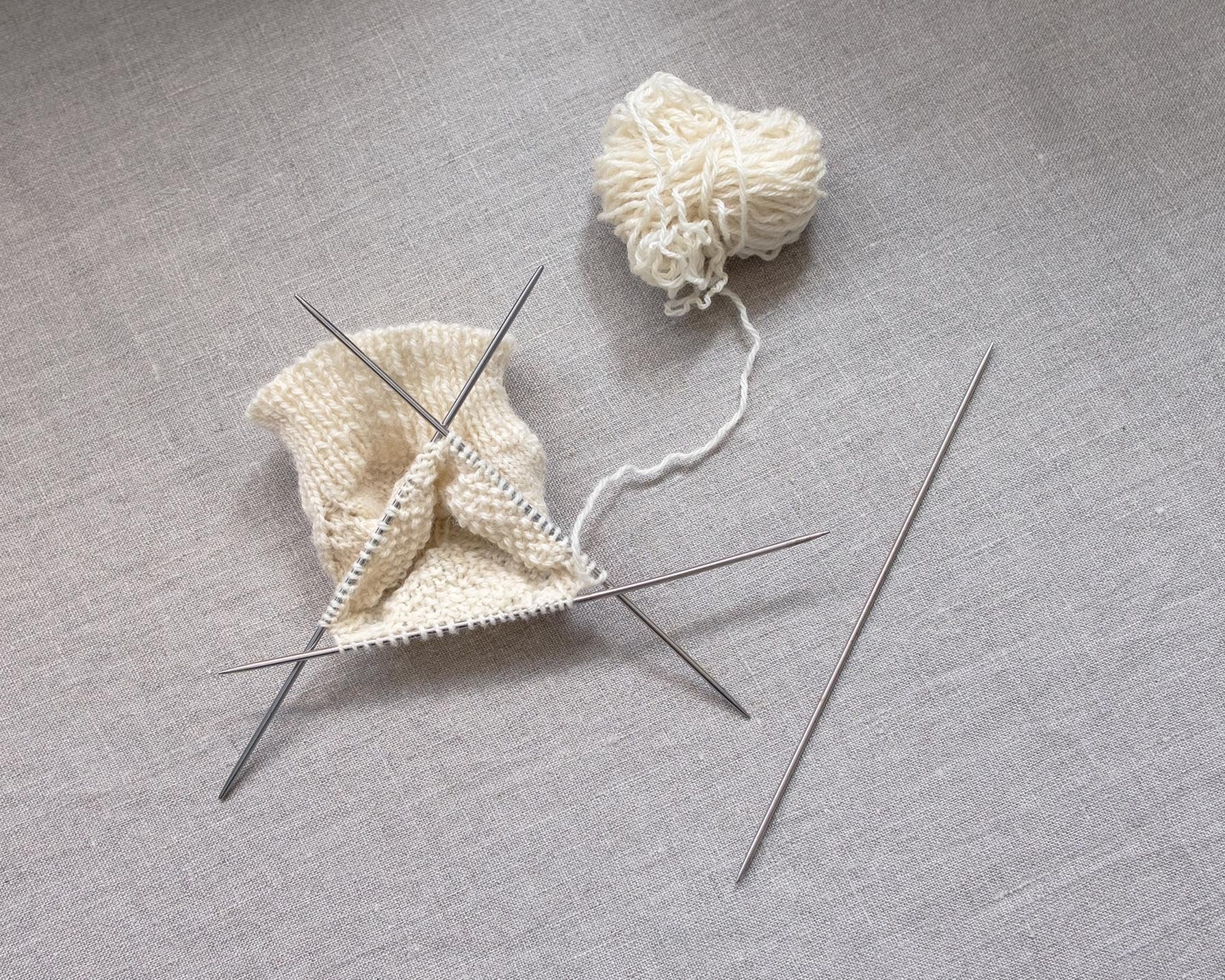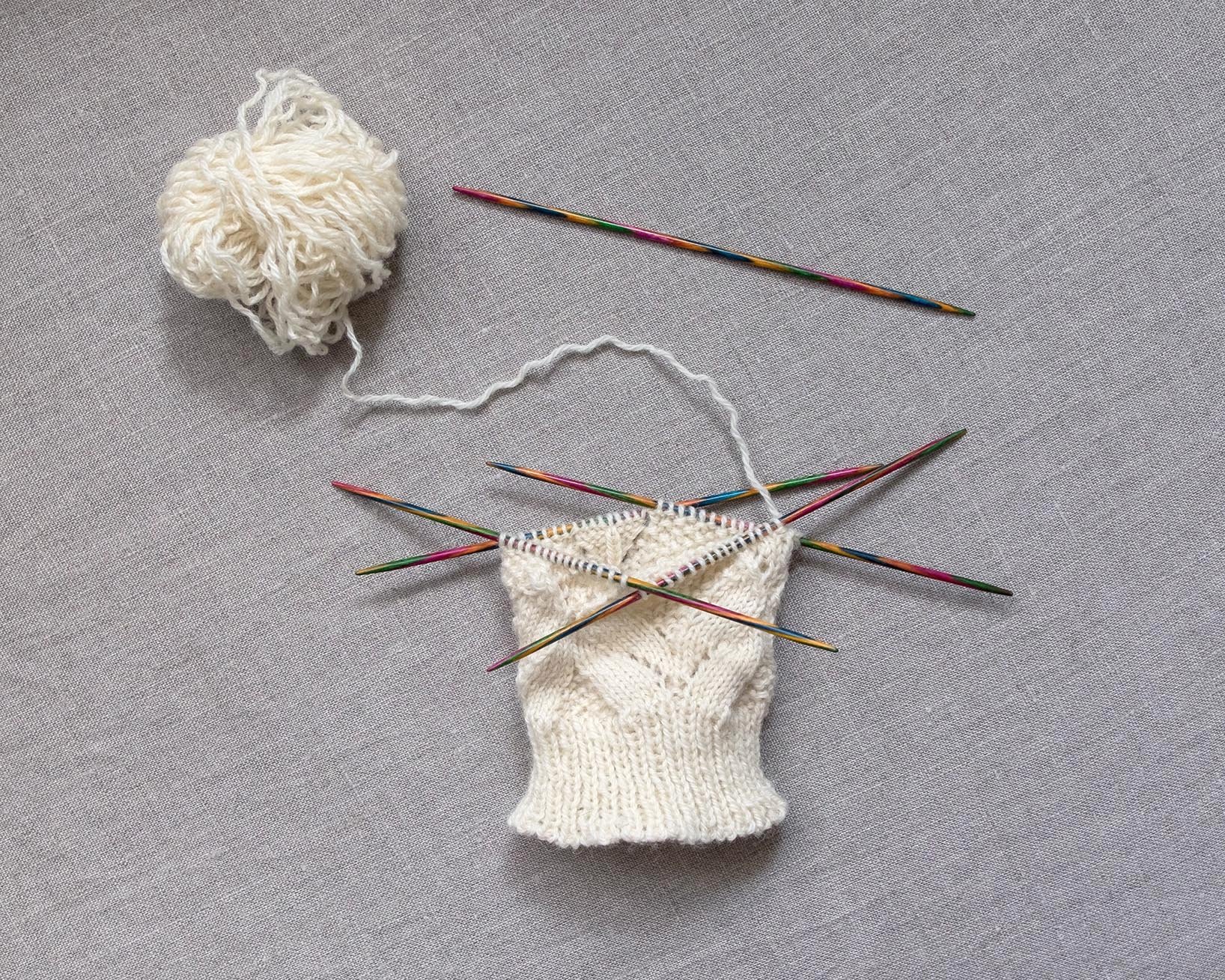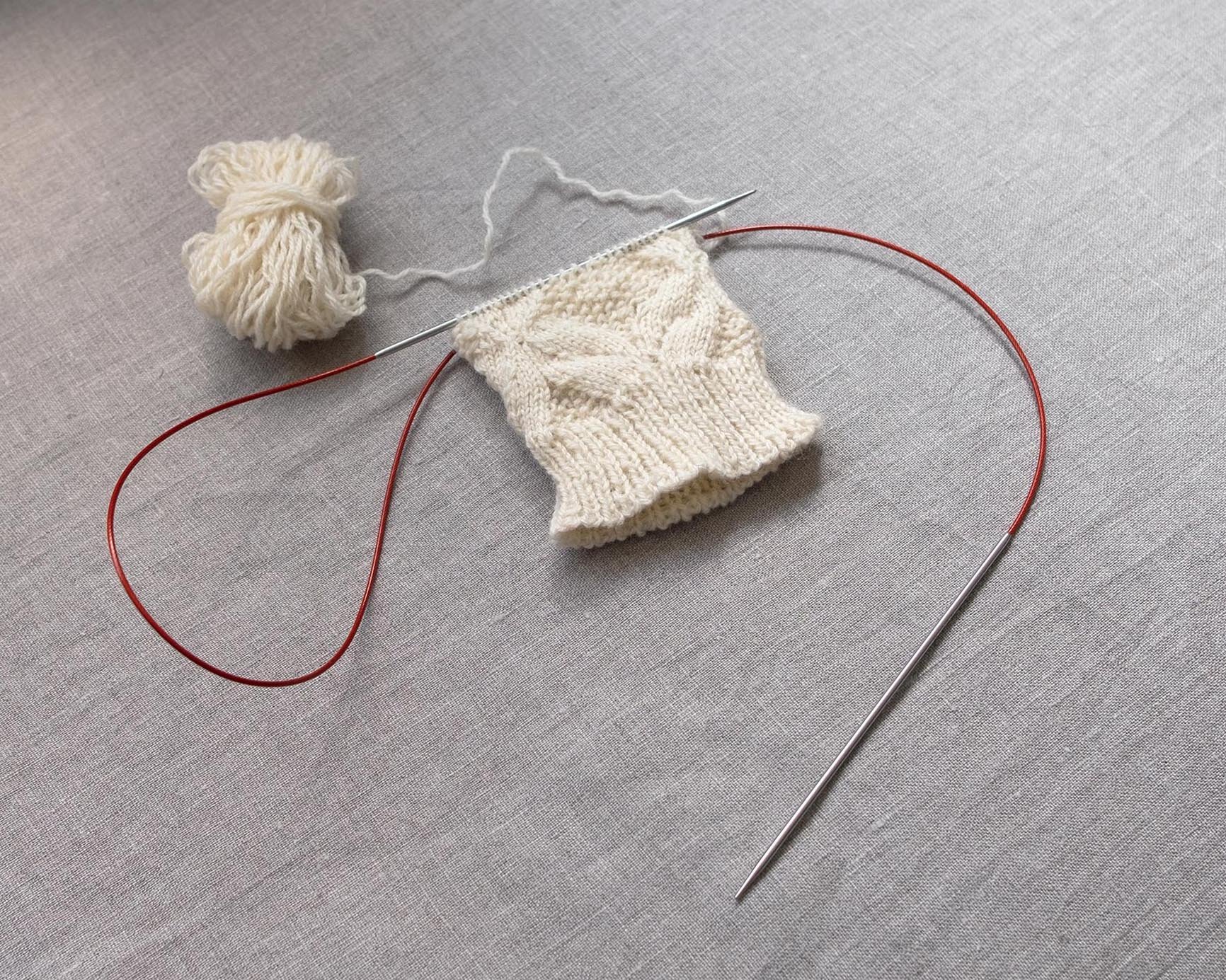Which needles to use for sock knitting?
There are lots of different ways of actually knitting socks using double pointed, circular or flexible double pointed needles. They are almost always knitted in the round, (although I have found some older pattens with instructions for knitting them flat and sewing up the seams). Often a pattern will specify which method you should use, but it is normally possible to use whichever technique you prefer.
Double Pointed Needles
The most traditional way of knitting socks is to use DPNs (double pointed needles). These come in a number of different materials, and are usually sold in packs of five or six. The stitches are distributed evenly across two, three or four needles, leaving a spare needle to knit with, and you work in rounds around your sock, one needle at a time. I normally use three DPNs to hold my stitches when knitting socks, as I find it difficult to maintain the tension at either end of the needles with just two, and find that four move around quite a lot while knitting (there are also more ends of needles to drop stitches from!). It’s really easy to decrease and increase stitches when knitting on DPNs.
Knitters who have a tight gauge might want to use metal DPNs, as they will allow stitches to slide over them easily. Metal needles also have the sharpest points, so are good for lace patterns. Wooden or bamboo needles will feel warmer in your hands, and grip the yarn better, however they are also more likely to bend or snap than metal needles.
Double pointed needles come in a range of different lengths, but 15cm or 20cm are generally good for sock knitting.
Knitting with four DPNS (these are 15cm Knit Pro Nova Cubics).
Five wooden DPNs (these are 15cm Knit Pro Symphonie needles).
Single Circular Needle
Circular needles are great for knitting socks. There are two options for using a single circular needle: you can either use one with a very short cable and knit rounds as usual, or use one with a much longer cable and the magic loop technique.
With a short (25cm or less) circular needle, you can work the leg and foot of a sock without having to move between needles. The actual needles are very short too, so can be more difficult or fiddly to grip. You would also need to switch to a different method when it comes to decreasing for the toes of socks. Either double pointed needles or magic loop would work for these bits.
Magic loop uses a circular needle that is at least 80cm long. Stitches are divided into two halves, and the spare bit of cable is pulled out between the stitches at the opposite end to the needle tips. Once you’ve knit over one needle, you pull the slack through to the other side of the stitches and repeat. It’s possible to knit two socks at once if you have a long enough cable and are working from two balls of wool, and it’s easy to increase and decrease stitches using this method. It also allows you to try a sock on as you knit it, which can be really useful.
Because they need to be wide enough to accommodate some sort of connector, interchangeable circular needles don’t always come in small enough sizes for knitting socks, (although Hiya Hiya do produce interchangeable tips from 2.00mm). This means that it may be easier to find fixed circular needles in your preferred needle type.
Magic loop using a ChiaoGoo 80cm Red Lace fixed circular needle.
Two Circular Needles
If you want to use circular needles, but don’t want to use magic loop (or don’t have long enough cables for magic loop) you could use two shorter circular needles. This works in a really similar way to magic loop, but you don’t have to worry about moving the cable around.
Two circular needles - one is the 80 cm Chiaogoo from above, the other is a 40cm Hiya Hiya circular needle.
Flexible Double Pointed Needles
Flexible double pointed needles are a sort of halfway between DPNs and circular needles. You use two of them to hold your stitches and a third to knit with. Hiya Hiya make their Flyer needles in three lengths, 5”, 6” or 8”. I’ve found that the shorter ones are a bit fiddly to knit with, but the 8” are much easier to grip. Addi also make CraSy Trio flexible DPNs which have one basic and one lace tip to on each needle.
Until really recently I had only ever knit socks on really old, bent metal DPNs that I’d been given second hand, or a very cheap bamboo set that I bought from Amazon. Sock knitting needles have definitely come a long way from there! Although double pointed needles are probably still my go-to, I’ve got a nice shiny new set now, and I’ll definitely mix it up a bit more in the future, and use magic loop and flexible DPNs too.
The socks that I’m working on here are the Poet Socks by Sari Nordlund, and the yarn is Mondim by Rosa Pomar in shade 100 natural/undyed white.

















